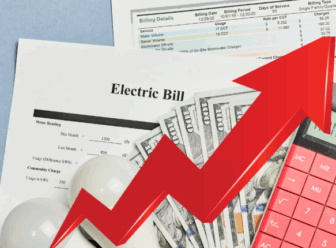The Washington Post
By Mike Tidwell
Mention the words “Northern Virginia” and the hyphenated adjectives come to mind: fast-growing, high-tech, well-educated, high-income. Fairfax County has a higher percentage of high-tech workers than Silicon Valley. No wonder the presidential candidates can’t seem to stay away.
So here’s the surprising question for every Northern Virginia voter: Why is this high-tech region, so dedicated to a “knowledge-based” economy, utterly dependent on an energy system as old as the Confederate States of America? Northern Virginia gets the lion’s share of its electric power not from wind turbines or solar farms but from coal: a shocking 1,180,400 tons of raw coal each year, nearly half of the region’s total load. And it’s not “clean coal” or “high-tech” coal. Just black, sooty, “rip it from the ground and set it on fire” coal. You’d think it would be different. You’d think Northern Virginia would be a leader in developing clean, sustainable energy at a level equal to its high-tech, high-education status.
You’d think.
But two roadblocks exist: Virginia Gov. Tim Kaine and mega-utility company Dominion Power. Both Kaine and Dominion are implacably wedded to coal, no matter what the economic and ecological cost, apparently.
Indeed, while the equally high-tech suburbs of Denver build wind turbine factories and nearby Frederick, Md., hosts a major solar-panel plant (owned by British Petroleum), Dominion Power just broke ground on a new coal-fired power plant it says is necessary because of rising energy demand throughout Virginia. Where is demand rising fastest, according to Dominion? In Northern Virginia. And the threat is explicit, Dominion says: Unless the new 585-megawatt plant, using mountaintop-removal coal and lacking any equipment to capture global warming pollution, is built, there will be rolling blackouts and brownouts across the commonwealth. But do Northern Virginians know that this coal plant would emit more than 5 million tons of greenhouse gases annually and dump shocking quantities of mercury into local streams and lakes annually?
The truth is that Virginia doesn’t need more power in the future. Virginia uses too much power in the present. The state is one of the most energy inefficient states in America, ranking 32nd in utility and state-government investment in efficiency programs. But perhaps the biggest tragedy is Kaine’s argument that the plant will create jobs. The state’s official analysis, performed by the State Corporation Commission, concluded otherwise. It determined that the high price tag of the plant — a whopping $1.8 billion — would raise electricity rates so much as to cause Virginia’s economy to shrink by 1,400 jobs. The plant will hurt, not help, working families in the state.
If you want jobs, look at what Xcel Energy is doing in Colorado. Until recently Xcel was, like Dominion, a coal-at-all-costs company. But the firm has seen the truth: In a world of global warming and rising fossil fuel costs, the future lies in wind and solar power. Xcel is preparing to voluntarily shut down two old coal plants. It is simultaneously investing heavily in wind and solar power; construction of two turbine manufacturing plants near Denver was just announced. Those plants will create 1,350 jobs. Doesn’t that sound like an approach befitting Virginia’s high-tech corridor?
If it’s true that politicians at every level are listening to the wishes of Northern Virginia voters more than ever, it’s time for the wealthiest, best-educated and most high-tech-oriented people in this region to finally speak with a loud voice: Coal was for yesterday. Clean energy is for today. It’s time to choose.
— Mike Tidwell
Takoma Park
The writer is director of the Chesapeake Climate Action Network.




